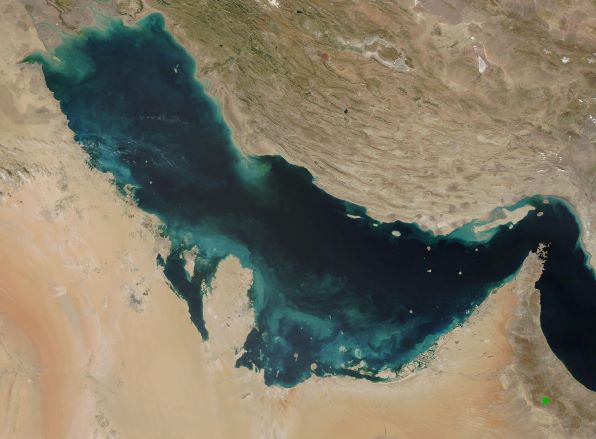Piecuch, C.G., Fukumori, I., and Ponte, R. M., 2021. Intraseasonal Sea Level Variability in the Persian Gulf. Journal of Physical Oceanography, 51(5), 1687-1704. https://doi.org/10.1175/JPO-D-20-0296.1

True-color image of the Persian Gulf acquired on March 7 2021 by the Moderate Resolution Imaging Spectroradiometer (MODIS) on board NASA’s Aqua satellite. Photo courtesy of NASA.
The Persian Gulf is one of the world’s busiest water ways, and its coastline is home to millions of people. However, due to a lack of historical data, sea-level variability in the region is not well understood. To fill this knowledge gap, we investigated what are the dominant magnitudes, scales, and mechanisms of sea-level variability at intraseasonal timescales in the Persian Gulf. We used sea level and ocean mass from NASA satellite altimeters and gravimeters and sea level from coastal tide gauges over 2002-2015. Intraseasonal sea-level and ocean-mass changes in the Persian Gulf are dominated by a basin-wide, single-signed, barotropic fluctuation. This basin-wide fluctuation is driven primarily by nonlocal forces, manifested in sea level outside the Persian Gulf in the Gulf of Oman, and secondarily by local forces of wind stress, surface pressure, and freshwater flux. The Gulf of Oman boundary condition shows lagged correlation with sea level upstream along equatorial and coastal wave guides, suggesting a broad scale ocean circulation and climate influence, and hinting at the potential predictability of Persian Gulf sea level months in advance based on sea level observations elsewhere.
This research was funded by the National Aeronautics and Space Administration (awards 80NSSC20K1241 and 80NSSC20K0728) and published in the Journal of Physical Oceanography.
